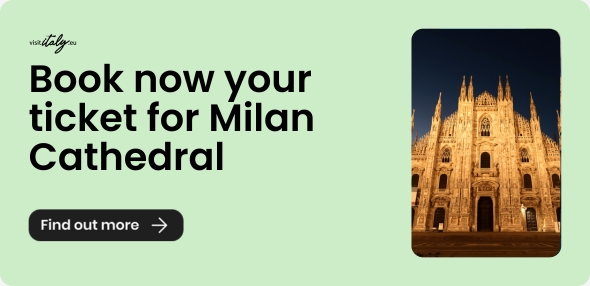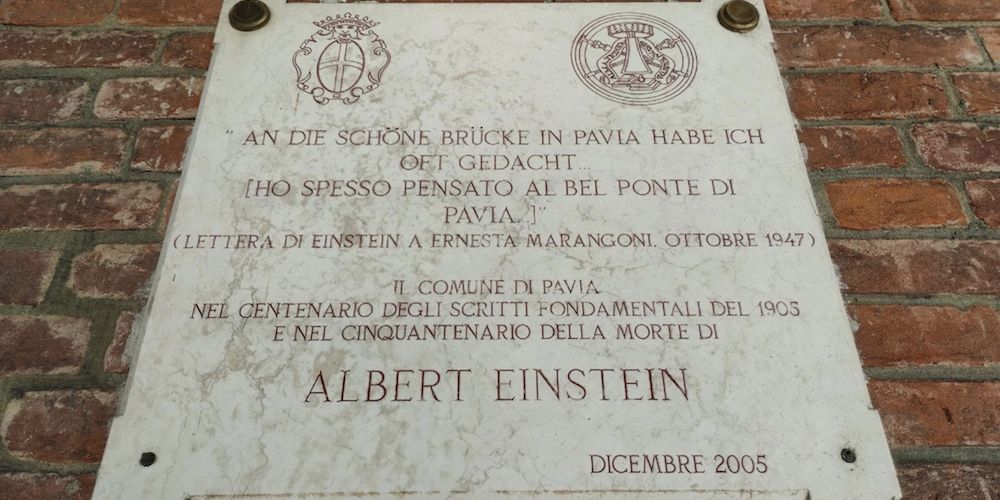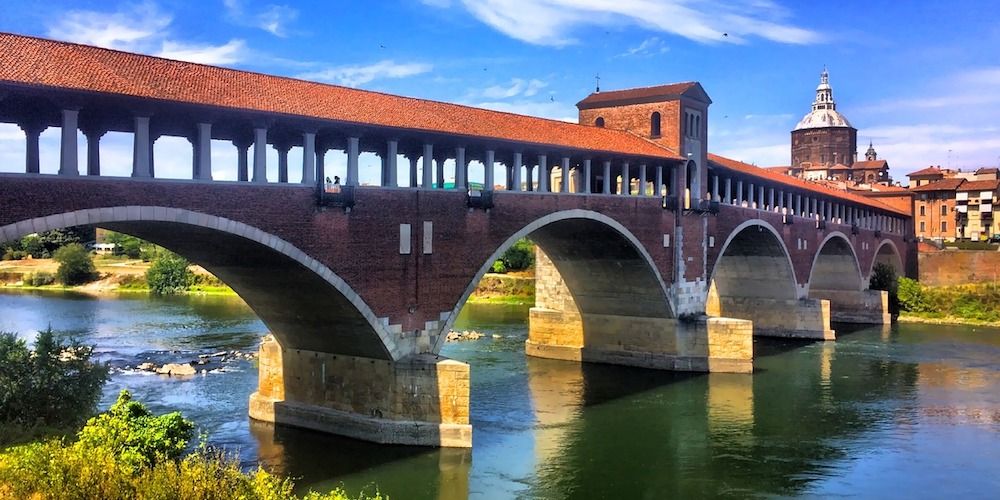The “Ponte Coperto” (Covered Bridge) of Pavia is probably the most iconic and photographed monument of the city. Built between 1351 and 1354, the bridge crosses the Ticino river and is located on the ruins of an ancient Roman bridge which connected the two shores of the river, in the town that at the time was called Ticinum.
The Covered Bridge immediately became a symbolic place for Pavia, a sort of gateway within the city walls, while the southern end led to the Borgo Ticino district, located outside the walls.
In addition to the undoubted aesthetic beauty, thanks to the beautiful arched architecture and the presence of the roof, what makes this monument so special for citizens and unmissable for tourists visiting the city?
- The legends about its birth
- The secular history
- Its legacy
So let’s find out together all the hidden secrets of the Covered Bridge of Pavia.

The Covered Bridge and the legend of the Devil
The history and architectural beauty of the structure have made it part to some of the most famous legends of the city, which have been handed down from generation to generation.
It is said that the bridge was actually born on the evening of Christmas Eve, a few days before the stroke of the year 1000 AD. It was a typically foggy winter evening, and the boats were unable to navigate from one side of the river to the other due to poor visibility.
Suddenly, the Devil himself showed up! He approached the citizens of Pavia, proposing to build a solid bridge that would allow them to cross the Ticino river easily. “What do you want in return?” they asked him. He said he wanted as a reward the first soul who passed through.
The inhabitants of Pavia seemed to accept the exchange. But after the bridge was built, thanks to the advice of the Archangel Michael, who had mingled with the crowd, they first sent a goat across the bridge. In this way, they managed to trick the Devil, who had to leave without being able to react in any way, since the pact had actually been respected.
Albert Einstein and the “beautiful bridge of Pavia

Maybe it was to keep the Devil away even later that, in the 18th century, a chapel dedicated to Saint John of Nepomuk was placed in the middle of the bridge. Saint John of Nepomuk is the patron saint of bridges and against hazards by water (John of Nepomuk was in fact a Bohemian presbyter who was killed by drowning by King Wenceslas in 1393).
Indeed the following centuries were of great prestige for the Covered Bridge and for the entire city of Pavia, which was frequented by important scholars who, especially in the 19th century, studied or taught at the University.
He was too young to attend the University, but a fifteen-year-old Albert Einstein also spent a period in Pavia in 1894.
He used to walk on the bridge together with his sister Maja and his childhood friend Ernestina Marangoni, with whom he remained in contact by letter even after becoming famous. A plaque still recalls the text of one of their letters, in which Einstein addressed a thought to the "beautiful bridge of Pavia" of which he always carried with him the sweet memory.
The reconstruction of the Covered Bridge of Pavia and its legacy
.jpg)
The fortune of the Covered Bridge seemed to last even beyond the Allied raids which targeted it in 1944, hitting the entire city for several days. In fact, despite the immediate collapse of the roof, the bridge remained usable and basically intact, while around it the rubble and victims multiplied, especially in the Borgo Ticino area.
It was only on the last day of bombing that the bridge collapsed. The arch of the bridge facing the Borgo collapsed. The structure thus became unusable, and subsequently the arch on the city side also crumbled. The inhabitants of Pavia were therefore forced to proceed with the demolition of one of their historical symbols.
Anyway, just a few years after the war, the Covered Bridge was rebuilt (the inauguration took place in 1951). The arched architectural style remained the same as before, just like the characteristic roof that had distinguished it in earlier centuries. The bridge was rebuilt a few meters further downstream, so that it is still possible to see some remains of that extraordinary medieval construction, whose entrance doors were even more impressive than today's structure.
Also the chapel of Saint John of Nepomuk, so dear to the ancient legends of Pavia, was finally rebuilt. After the bombings, the original statue of the Saint that was in the old chapel of the fourteenth-century bridge was recovered from the river, restored and placed in the new chapel. In this way, Saint John is once again set out to guard the bridge, as it was in the past and as it will always be in the centuries to come.
Nowadays, the modern Covered Bridge keeps vivid the memory of its origins, while the young generations of Pavia and the thousands of visitors from all over Italy and abroad project it towards the future, under the aegis of the great characters who for centuries have outlined the history of this wonderful monument.
About the author
Written on 18/04/2023



Alessandro Savino
Forged by the Devil and crossed by Albert Einstein: the Covered Bridge of Pavia awaits you as it stands spectacularly over the beautiful Ticino river.